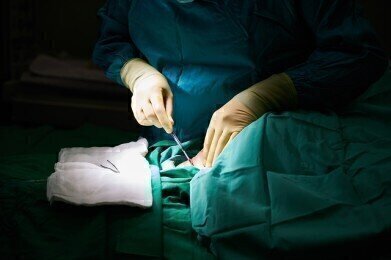Microscopy & Microtechniques
How Science is Making Plastic Surgery Less Invasive
May 05 2019
Following a breakthrough finding from an American chemist and physician, the concept of plastic surgery has become far less invasive. Developed by head and neck surgeon Brian Wong and Los Angeles-based chemist Michael Hill, the surgical method swaps incisions, scar tissue and a lengthy recovery process for a non-invasive method that uses electric pulses to softens and manually reshape cartilage.
The findings were presented at the semi-annual national meeting of the American Chemical Society and explained how the method has proved successful on rabbit cartilage, as well as collagen-rich tissue in cornea. Wong and Hill hope that in the future the method can be used to offer non-invasive plastic surgery procedures, as well as a simple and effective corrective vision repair solution.
Taking the sting out of plastic surgery
The method works by targeting cartilage, an important structural component of the body made up of strands of collagen fibres encased by positively charged sodium ions and negatively charged proteins. Wong and Hill found that passing low voltage currents through cartilage electrolyses water molecules, which in turn divides them into oxygen and hydrogen ions. The current triggers a positive charge in the protons, which counteracts the negatively-charged proteins. This softens the cartilage and allows it to be manually shaped.
“Once the tissue is floppy, you can mould it into whatever shape you want,” explains Hill.
Targeting collagen-rich tissue
As well as reshaping nose cartilage, the surgical method has also been used to improve vision. Wong and Hill used a 3D printer to create a rigid contact lens embedded with electrodes. It was then placed on a rabbit's eye and targeted with a low-voltage current, which softened the collagen-rich tissue in the cornea and reshaped it to fit the contact lens cast. This successfully restored the rabbit's cornea and represents an exciting step forward for optical research.
While Hill admits the research is still in early days, he predicts that the cornea-remoulding method could eventually replace invasive techniques like laser eye surgery. He also notes that the body is full of collagen-rich tissues, which means the technique could be developed beyond plastic surgery and used in other surgical applications.
Advanced laboratory equipment plays a key role in supporting scientific breakthroughs. For a closer look at the latest complex electron microscope systems used the state-of-the-art research laboratories don't miss 'Surveying Sites for Electron Microscopes'.
Digital Edition
Lab Asia 31.2 April 2024
April 2024
In This Edition Chromatography Articles - Approaches to troubleshooting an SPE method for the analysis of oligonucleotides (pt i) - High-precision liquid flow processes demand full fluidic c...
View all digital editions
Events
May 05 2024 Seville, Spain
InformEx Zone at CPhl North America
May 07 2024 Pennsylvania, PA, USA
May 14 2024 Oklahoma City, OK, USA
May 15 2024 Birmingham, UK
May 21 2024 Lagos, Nigeria




.jpg)













